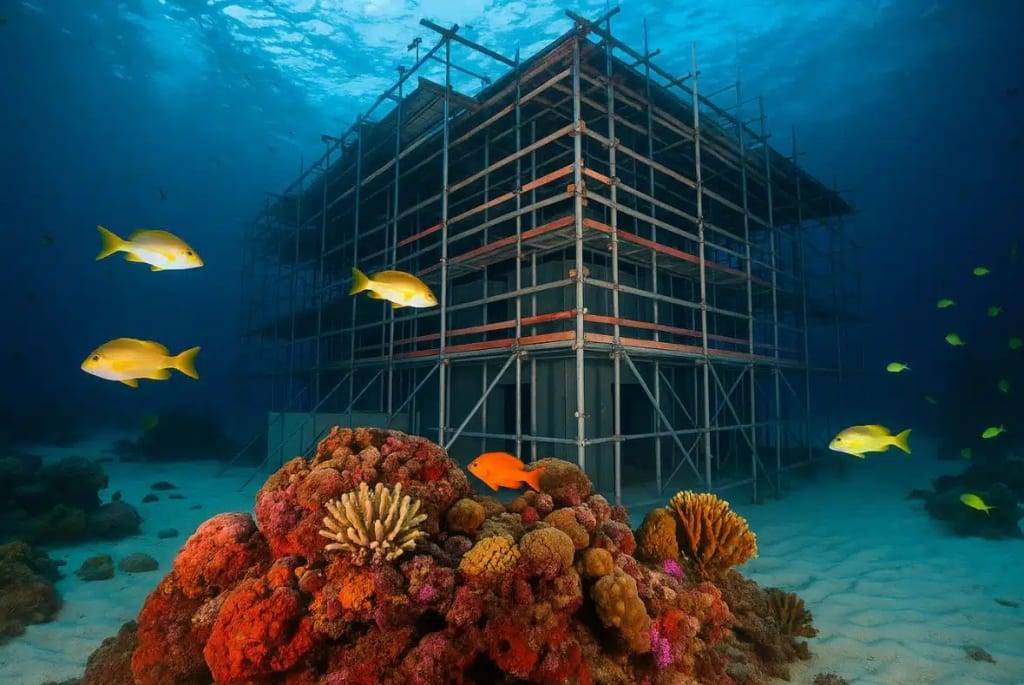Diving Deep: China’s Underwater Station and the Ocean’s Untapped Power
Picture this: you’re standing on a rocky cliff, staring out at the ocean. Waves crash below, relentless, carrying secrets from depths we’ve barely explored. It’s humbling, isn’t it? The sea feels like another planet - vast, mysterious, and just a little intimidating. So when I read that China’s building the world’s deepest underwater station to tap into ocean energy, my first thought was: Wait - we’re actually doing this? It’s the kind of thing that sounds like sci-fi, but it’s happening right now. And it’s got me wondering what this could mean for our future.
The station, officially called the Deep-Sea No. 1 Energy Station, sits 3,300 meters below the surface in the South China Sea. That’s deeper than most submarines dare to go. It’s not just a research lab - though it’s that, too. This thing is designed to unlock the ocean’s energy potential, specifically targeting methane hydrates, a kind of “flammable ice” trapped in the seabed. These icy crystals hold massive amounts of natural gas, and scientists estimate there’s enough down there to power entire countries for centuries. Sounds like a game-changer, right? But - and there’s always a but - it’s not as simple as drilling and cashing in.
Let’s back up. Methane hydrates are tricky. They’re stable only under intense pressure and freezing temperatures, which is why they’re chilling (pun intended) deep in the ocean. Try to extract them, and they can dissolve into nothing, or worse, release methane - a greenhouse gas way more potent than carbon dioxide. I remember reading about a failed extraction attempt in Japan years ago. Millions spent, and they barely got a flicker of gas before the project fizzled out. China’s betting big that they’ve cracked the code, using cutting-edge tech to stabilize the process. If they pull it off, it could reshape global energy markets. If they don’t… well, let’s just say the ocean doesn’t forgive mistakes easily.
What gets me, though, is the sheer ambition of it all. Building a station that deep isn’t like slapping together a shed in your backyard. The pressure down there is crushing - think 300 times the atmospheric pressure on land. Equipment has to be flawless; one leak, and you’re done. Then there’s the human element. Scientists and engineers live in this station for weeks, working in conditions most of us can’t even imagine. I mean, I get antsy when my Wi-Fi buffers for ten seconds. These folks are out there, cut off from the world, chasing a dream that might power the future. There’s something almost poetic about it.
But here’s the thing - ambition comes with baggage. The South China Sea isn’t exactly a neutral playground. It’s a geopolitical hotspot, with overlapping territorial claims from Vietnam, the Philippines, and others. China’s underwater station isn’t just a science project; it’s a statement. Critics argue it’s a way to cement control over disputed waters. Others say the environmental risks - methane leaks, seabed disruption - outweigh the benefits. I can’t help but think of the time I tried to “fix” my leaky kitchen sink. One wrong twist, and I had a fountain in my apartment. Now imagine that, but with a fragile ecosystem and global consequences.
Still, I’m kind of rooting for this. Not because I’m cheering for any one country, but because the ocean’s potential is mind-boggling. Beyond methane hydrates, there’s wave energy, tidal power, even thermal gradients - all largely untapped. The International Energy Agency says ocean energy could provide 10% of global electricity by 2050 if we get serious about it. That’s not pocket change. It’s a lifeline for a planet choking on fossil fuels. And yet - did I just contradict myself? - we’ve barely scratched the surface of understanding the ocean’s ecosystems. One misstep, and we could do more harm than good.
I keep coming back to that image of the waves. They don’t stop, do they? Day after day, they carve cliffs, shift sands, and hide treasures we’re only starting to uncover. China’s underwater station is a bold step - maybe a reckless one, maybe a brilliant one. Either way, it’s a reminder that the ocean’s not just a backdrop; it’s a frontier. So, what do you think? Is this the dawn of a new energy era, or are we diving too deep, too fast?



